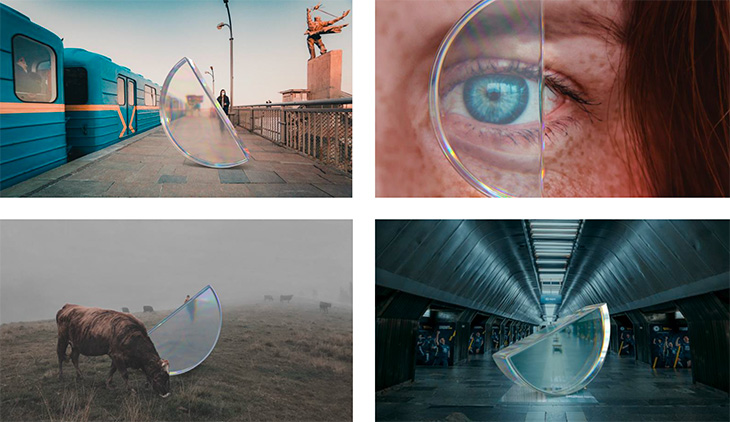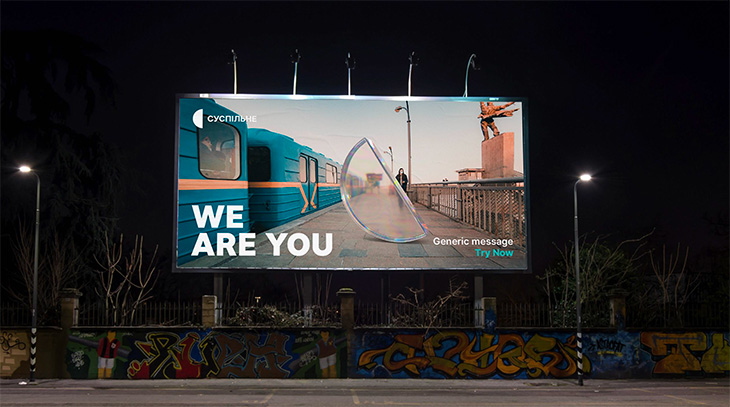Before anyone had any idea of Russia’s intention to invade Ukraine, the country had spent the prior decade reforming its institutions as part of its democratic development. Part of that effort involved changing its national broadcasting service into a network that delivered true news, information and entertainment rather than state-controlled propaganda.
To start, the service in December 2019 renamed itself Suspilne (meaning “public” in Ukrainian) instead of UA: PBC (essentially, the Public Broadcasting Company of Ukraine).
“It was painful but for the first time, we were successful in reforming it from post-Soviet state television, which paid poor salaries and produced poor content,” said Andriy Taranov, a Suspilne board member who oversees marketing and international relations for the service, via Zoom.
Making that change wasn’t as simple as just changing things – the service had to work to get legislation passed that made it a truly independent public broadcaster that was not dependent on the government.
“Everyone said you have to burn it to the ground and build something new,” Taranov said. “The team focused first on the news to make it high quality, independent and unbiased.”
Suspilne is composed not just of TV channels, but also of multiple radio stations, regional news outlets and digital properties.
“Last fall, we understood that there was a huge need to put all of this together,” said Taranov. “We needed to tell the public that this is a trusted source of information.”
Suspilne connected with the UK’s Studio Hansa through an international procurement process to help the service move forward with its new look.
“We knew we couldn’t create one campaign that would say everything, so we wanted to concentrate on a high-quality design system that would easily communicate that ‘this is your public broadcaster,’” said Taranov.
Studio Hansa began working on the project prior to Christmas 2021, just two months before Russia invaded the country.
“It was both a rebranding and a debranding,” said Nick Scott, executive creative director of Studio Hansa. “We were trying to bring the brand down to a core essence and build back up off of that.”
Studio Hansa started with the logo, which Suspilne had already changed on its digital platforms. The logo was essentially the letter C, which is an S in Cyrillic.
“One of the strengths they wanted from us was that they wanted to be seen on the world stage as more European, but they also acknowledged that there is a huge amount of Russian heritage in the country,” said Scott.
Taranov, who has been working in international media for more than 25 years, knew that a new design system with unified branding would be an important first step in helping to communicate that new level of quality to Ukrainians and to the world. Little did he know how much attention would soon be focused on Ukraine and how much international news services would be turning to Suspilne to help them understand the situation there.
As soon as it came on board, Studio Hansa took a look at what Suspilne had already done and quickly decided not to move the logo very far off of the C shape the public broadcaster had adopted. Instead, it turned that C into a lens that is “always moving, always progressing with the Ukrainian people. It serves as a bit of a seesaw, an object that’s always balanced. It’s also always observing,” said Scott.
“The lens is about transparency and it’s reflective of the culture around it,” said Robert Lloyd, creative lead at Studio Hansa.

“With that lens, we were saying some very simple things,” said Taranov. “We were saying: ‘we are balanced. We are transparent. We are diverse.’ We have deployed this across many assets and platforms. To me, it was a revelation. I have huge respect for Studio Hansa. They gave a whole life to this simple thing and built a whole [design] system behind this object.”
Studio Hansa also helped Suspilne come up with a new tagline: “We Are You,” around which it built the initial launch campaign. And it created a mnemonic that was inspired by a piece of music by Ukrainian composer Vasyl Barvinsky, who risked incarceration and death to compose music that was truly independent and Ukrainian.
It also created an on-air look that would unify all of these disparate parts and make clear to viewers what they were watching.
In addition, Studio Hansa had created an outdoor campaign around the new logo on which Suspilne signed off on a Wednesday. “The morning after that we woke up to tanks rolling in,” said Scott.
Obviously, “all bets were off as far as launching an outdoor campaign,” or any campaign at all. The staff of Suspilne dispersed, with some of them evacuating from Kyiv and others just relocating within the city. Some of them also had family members that they helped leave the country in the early days of the invasion.

But they were soon back at work. “They were so committed to carrying this through. They said ‘we’re going to pull through and we’re going to do this rebrand,’” said Scott.
“We ended up in a situation where the first thing we needed to do was survive,” Taranov said. “Then we needed to not stop broadcasting. We found that people rushed to the public broadcaster because they were looking for information and we had enough people on the ground. Our regional network proved to be the best in the country. Suddenly, it appeared that our news feed was something people needed really badly. And we were smart enough that we had the reserve team in place before the war started, just in case.
“In the first 48 hours, we went from regular reporting to this 24-hour marathon and coordination with private stations and the state parliamentary channel. Suddenly millions of people were stuck on the roads and in some cases, they don’t even have FM radio stations because the roads go far from populated areas. We only had our 20th-century AM radio networks. We were the last ones who were announcing evacuations from Mariupol. People were disconnected from all communication except AM radio.”
In light of that, Suspilne’s Telegram channel—a platform like What’s App with channels for content—quickly grew.
“When I sat in the car after getting out of the bomb shelter, I saw that our whole Telegram channel had grown from 3,000 users to 700,000,” Taranov said. Suspilne’s social-media channels ultimately ballooned to 6 million users as the invasion dragged on.
Suspilne’s staff was now broadcasting from bomb shelters in Lviv. After they moved, Russian missiles hit both the TV tower and the TV center in Kyiv where they had all been working just two days prior, Taranov said.
“The success of the company was that we never stopped broadcasting,” he said. “We had managers and anchors driving, 18 that started working from Liev, another 18 that were working underground in Kyiv, and people working in digital centers that are spread around the country.”
In addition, many of Suspilne’s local teams in the occupied parts of the country stayed on the job for weeks. “Almost no one fled in our local affiliates on the Eastern side of the country or on the front line. Our journalists kept reporting from the occupation for weeks, although they stopped showing themselves on camera,” Taranov said.
In the midst of all that chaos and disruption, Suspilne decided to go through with the rebrand. In fact, they decided it was more important than ever because people desperately needed to be able to easily find the information that Suspilne was providing.
“This was the moment that we said ‘yes,’” said Taranov. “We knew we needed an easy way to get information on time to all of our platforms, being aware that some of them might be switched off. We wanted to deploy an identification system that would always allow our viewers to navigate to the right place.”
Suspilne also decided to switch around the plan, which had been to first rebrand its general entertainment channel Pershyi. But because news was now in high demand, Suspilne redirected all its efforts into that.
Back in London, Studio Hansa put in extra effort to help Suspilne deploy the rebrand, especially while the team was disrupted, evacuating and on the move.
Part of Studio Hansa’s “debranding” effort was to consolidate its brand identity into one comprehensive look instead of different looks across many regions, cultures and populations. Studio Hansa worked with Suspilne to simplify that, “giving it a consistent look across all regions,” said Scott.
“The entire system was built in such a way that from the very beginning – before the war and especially when the war started and we understood that we were moving forward and not stopping – we created the concept to be adaptable and flexible for all media, platforms, assets and every type of material,” said Sasha Bolotova, design team manager, Suspilne, also on Zoom. “Digital was the second center after television. In every work flow, every process, we were putting our attention on how these systems would work on digital media, on air and on how it was all going to work together.”
Referring back to that C, or the lens, Studio Hansa created a system of frames for Suspilne’s digital content – which exists on the web, YouTube, Instagram and so forth – in which the lens acts more like a tab and different colors indicate different types of content.
“We looked at references like Netflix and Hulu and used short, clear 2D graphics and created systems of tiny symbols that allows us to be very clearly identified on small devices like smartphones,” said Taranov.
Once news was rolled out, Suspilne turned the rebrand to its light entertainment channel, Kultura, because Ukrainian viewers started looking not just to be informed but also to be entertained and distracted as the months wore on.
“Rebranding this channel got reprioritized because Suspilne wanted to give that support to citizens,” said Scott. “News was important but so was entertainment.”
Today, most of the team is back working from Kiev, although some remain in Lviv and around the country. “One of the things we learned is that hyper-local journalism and regional journalism is very important; it’s existential,” said Taranov.
In the end, Studio Hansa’s rebrand – or debrand – of Suspilne came just in time.
Tags: rebrand studio hansa suspilne ukraine












































__twocolumncontent.jpg)











